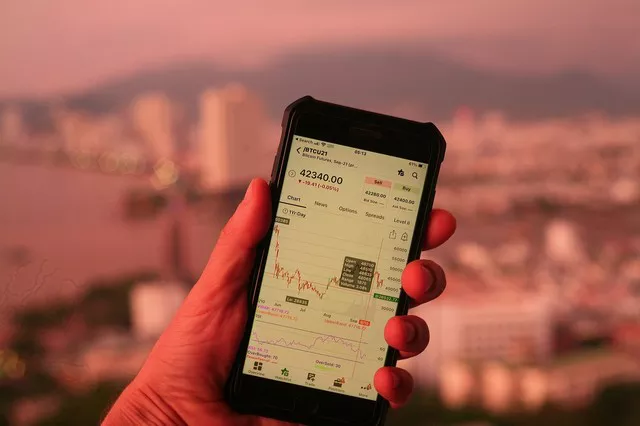Index futures play a pivotal role in modern financial markets, offering investors the opportunity to gain exposure to the performance of entire markets or specific sectors without directly owning the underlying assets. These derivatives are intricately linked to the movements of benchmark indices and are essential instruments for speculation, hedging, and portfolio diversification.
1. Understanding Index Futures
Index futures are derivative contracts that derive their value from the performance of a specific benchmark index. These contracts allow market participants to speculate on the future price movement of the index without actually owning the underlying stocks. Index futures are traded on organized exchanges and are subject to standardized contract specifications, including contract size, expiration date, and tick size.
Key benchmark indices, such as the S&P 500, Dow Jones Industrial Average, and Nasdaq Composite, serve as the foundation for index futures contracts. The movements of these indices reflect the collective performance of constituent stocks, making index futures a vital tool for investors seeking exposure to broader market trends.
2. Composition of Index Futures
The calculation of index futures is intricately linked to the composition of the underlying benchmark index. Benchmark indices are constructed using various methodologies, such as market capitalization weighting, price weighting, or equal weighting. The index composition defines how the performance of individual stocks is aggregated to represent the overall market or sector.
For instance, in a market capitalization-weighted index like the S&P 500, companies with larger market capitalizations exert a greater influence on the index’s movements. Therefore, the performance of these influential stocks significantly impacts the calculation and subsequent price movements of S&P 500 index futures.
3. Continuous Pricing and Basis
Index futures are quoted in real-time and traded continuously during market hours. The pricing of index futures is determined by various factors, including the current level of the underlying index, interest rates, dividends, and market sentiment.
The concept of basis plays a significant role in index futures pricing. Basis refers to the difference between the spot (current) value of the underlying index and the futures price. Market participants closely monitor the basis to assess potential arbitrage opportunities and to gauge the relationship between futures and the underlying index.
4. Dividends and Fair Value
Dividends are a crucial component in the calculation of index futures’ fair value. When dividends are distributed to shareholders of index constituent stocks, they impact the index’s performance. In the context of index futures, the absence of dividend payments can lead to a disparity between the futures price and the underlying index.
To account for this, index futures are often adjusted to reflect the impact of dividends. Dividend-adjusted index futures calculations involve subtracting the estimated value of dividends from the index’s current level to determine the fair value of the futures contract.
5. Cash Settlement and Expiration
Index futures contracts are typically settled in cash rather than through physical delivery of the underlying assets. Cash settlement involves transferring the difference between the contract’s settlement price and the index’s closing value to the futures contract holder.
Upon expiration, the settlement price is determined based on the index’s closing value on the contract’s last trading day. This settlement process eliminates the need for physical delivery of stocks, streamlining the trading and settlement of index futures contracts.
6. Impact of Interest Rates and Cost of Carry
Interest rates and the cost of carry play a role in index futures pricing. The cost of carry refers to the expenses associated with holding the underlying assets until the futures contract’s expiration. This includes factors such as financing costs, dividends, and storage costs.
When interest rates rise, the cost of carry increases, impacting the pricing dynamics of index futures. Traders and investors monitor changes in interest rates to assess the potential impact on futures prices and make informed trading decisions.
7. Market Participants and Liquidity
Market participants in index futures markets include a diverse range of investors, traders, hedgers, and speculators. The liquidity of index futures markets is influenced by factors such as trading volumes, market depth, and bid-ask spreads.
High liquidity is essential for efficient trading and accurate price discovery. Liquid index futures markets ensure that participants can enter and exit positions at competitive prices, contributing to overall market stability.
8. Hedging and Risk Management
Hedging is a key motivation for trading index futures. Investors and portfolio managers use index futures to manage risk associated with their broader portfolios. By taking positions in index futures contracts, market participants can offset potential losses resulting from adverse market movements.
For instance, if a portfolio manager anticipates a market downturn, they can take short positions in index futures to protect the value of their portfolio. This hedging strategy can mitigate potential losses and enhance portfolio stability during periods of market volatility.
9. Trading Strategies and Speculation
Index futures offer a range of trading strategies for speculators aiming to profit from price movements. Traders can take long positions to capitalize on anticipated market upswings or short positions to profit from expected declines.
Technical analysis, chart patterns, and indicators are commonly used by traders to identify potential entry and exit points. Speculators also monitor macroeconomic events, earnings reports, and geopolitical developments that could influence the performance of the underlying index.
Conclusion
The calculation of index futures is a multifaceted process influenced by the composition of the underlying benchmark index, interest rates, dividends, and market sentiment. These derivative contracts provide investors with a powerful tool for gaining exposure to market trends, managing risk, and pursuing trading opportunities.
By understanding the intricate mechanics of how index futures are calculated, investors and traders can make more informed decisions and navigate the complexities of financial markets with confidence. The interplay between index futures and benchmark indices underscores their significance as instruments that contribute to price discovery, liquidity, and the overall efficiency of global financial markets.


